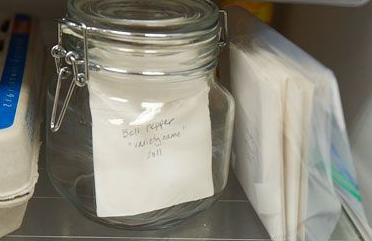When it comes to gardening, there are various techniques that can be used to improve seed germination. One such technique is seed stratification. But what exactly are stratified seeds and why is stratification important? In this blog post, we will explore the concept of seed stratification and learn how to stratify seeds effectively.
What are stratified seeds?
Stratified seeds are seeds that require a period of cold and moist conditions in order to break their dormancy and germinate. This process mimics the natural conditions that seeds would experience in their native environment, where they would go through a winter season before sprouting in the spring. By subjecting the seeds to a period of cold and moist conditions, we can simulate this natural process and improve germination rates.
Why do seeds need to be stratified?
There are several reasons why certain seeds need to be stratified:
- Breaking dormancy: Some seeds have a hard outer shell that prevents water and oxygen from reaching the embryo inside. Stratification helps to soften the seed coat and break dormancy, allowing the seed to germinate.
- Timing germination: By stratifying seeds, we can control when they germinate. This is particularly useful for seeds that require a specific temperature range or a certain number of cold days to germinate.
- Enhancing germination rates: Stratification can significantly improve germination rates for certain seeds. By providing the optimal conditions for germination, we can increase the chances of successful seedling establishment.
How to stratify seeds?
Now that we understand the importance of seed stratification, let's explore how to stratify seeds effectively:
Step 1: Choose the right seeds
Not all seeds require stratification. Research the specific requirements of the seeds you are planning to stratify to ensure that it is necessary.
Step 2: Determine the stratification method
There are two common methods for seed stratification:
- Cold stratification: Place the seeds in a moist medium, such as damp paper towels or peat moss, and store them in a cool location, such as a refrigerator, for a specific period of time.
- Warm stratification: Some seeds require warm stratification, which involves subjecting the seeds to a warm and moist environment for a specific period of time.
Step 3: Prepare the seeds for stratification
Before stratifying the seeds, it is important to prepare them properly. This may involve scarification, which is the process of nicking or scratching the seed coat to improve water absorption.
Step 4: Stratify the seeds
Follow the specific instructions for the chosen stratification method. Ensure that the seeds are kept moist throughout the stratification period.
Step 5: Plant the stratified seeds
After the stratification period is complete, plant the stratified seeds according to the recommended planting depth and spacing for the specific plant species.
By following these steps, you can successfully stratify seeds and improve germination rates. Remember to always research the specific requirements of the seeds you are working with to ensure the best results. Happy gardening!

Leave a comment